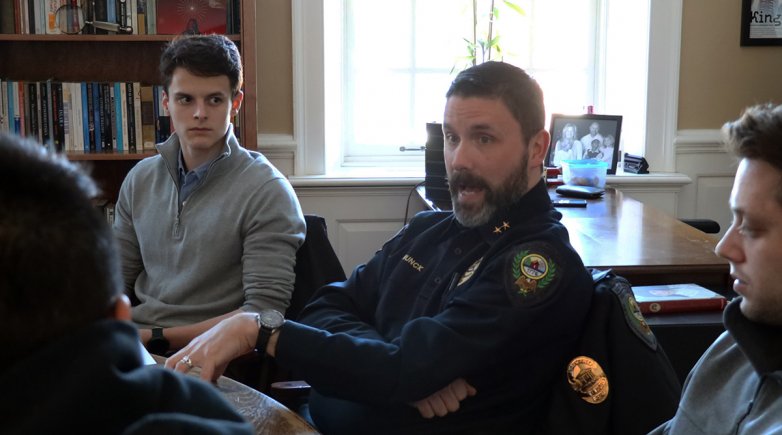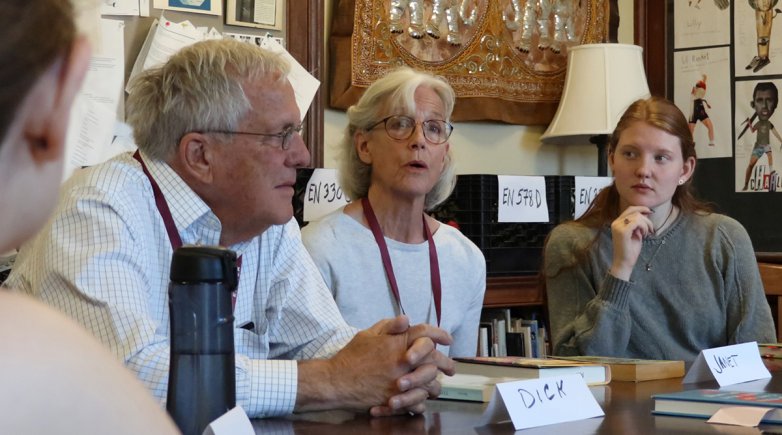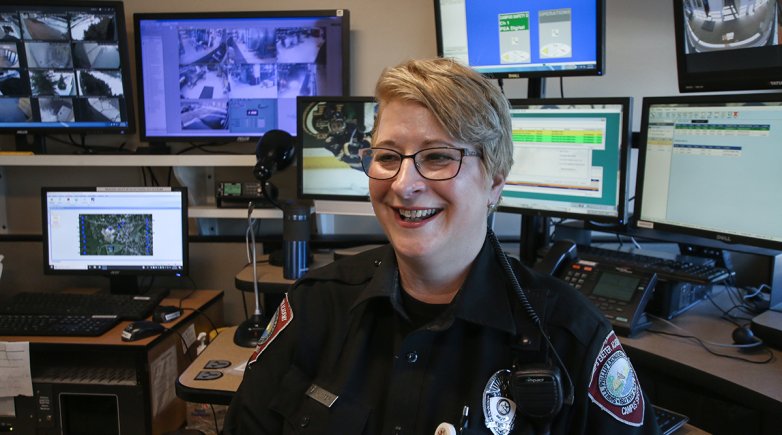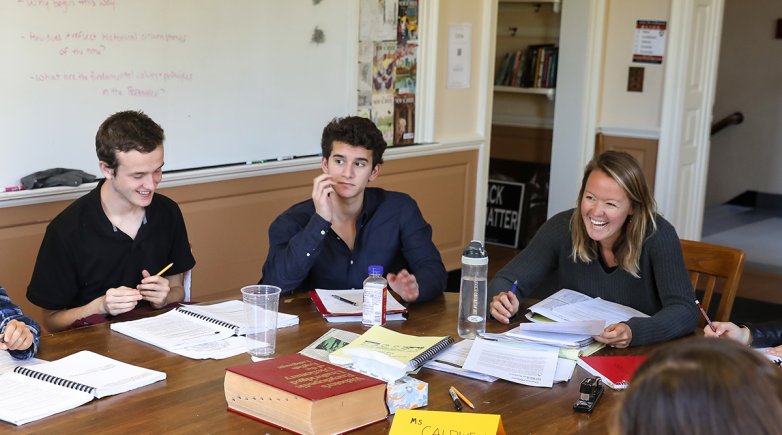Just the facts
Local police officer helps students uncover the truth about the crime-solving process.
Few reads are more compelling than a good whodunit. But while these page-turners have kept bedside lamps on for “just one more chapter” for generations, they often forgo realistic depictions of detective work in favor of a more compelling narrative.
Students in English Instructor Johnny Griffith’s ENG588: Crime Fiction class have spent the winter term studying the genre and the works of early mystery authors like Edgar Allan Poe, Agatha Christie and Sir Arthur Conan Doyle as well as other more contemporary writers in an attempt to decode what makes these stories so captivating.
Present for one of the course’s final meetings is Deputy Chief Michael Munck of the Exeter Police Department. In his more than two decades of law enforcement, Munck has cracked numerous cases. On this day however, it was the students leading the inquisition of the longtime lawman, comparing the veteran investigator’s work to that of fictional gumshoes.
The Harkness discussion centers around a short story titled Sadie When She Died, a police procedural written by one of the most famous authors of the genre, Ed McBain. The murder-mystery follows a detective who, despite what appears to be an open-and-shut case, employs a series of tactics to find the truth, including a dinner date with his prime suspect.
Previous class readings have focused on the work of private investigators, so Meredyth Worden ’20 asks the group how the protagonist’s standing as a law enforcement officer may influence his investigation.
James Long ’20 responds with a question of his own directed toward Munck.
“I’m wondering about the viability of a police officer pursuing leads on what looks like a neat and tidy case — is that something that would be possible?” Long asks.
“Real-life investigations are not about closing a case,” Munck responds. “They’re about identifying the person that committed the crime, and sometimes those can be two different things.”
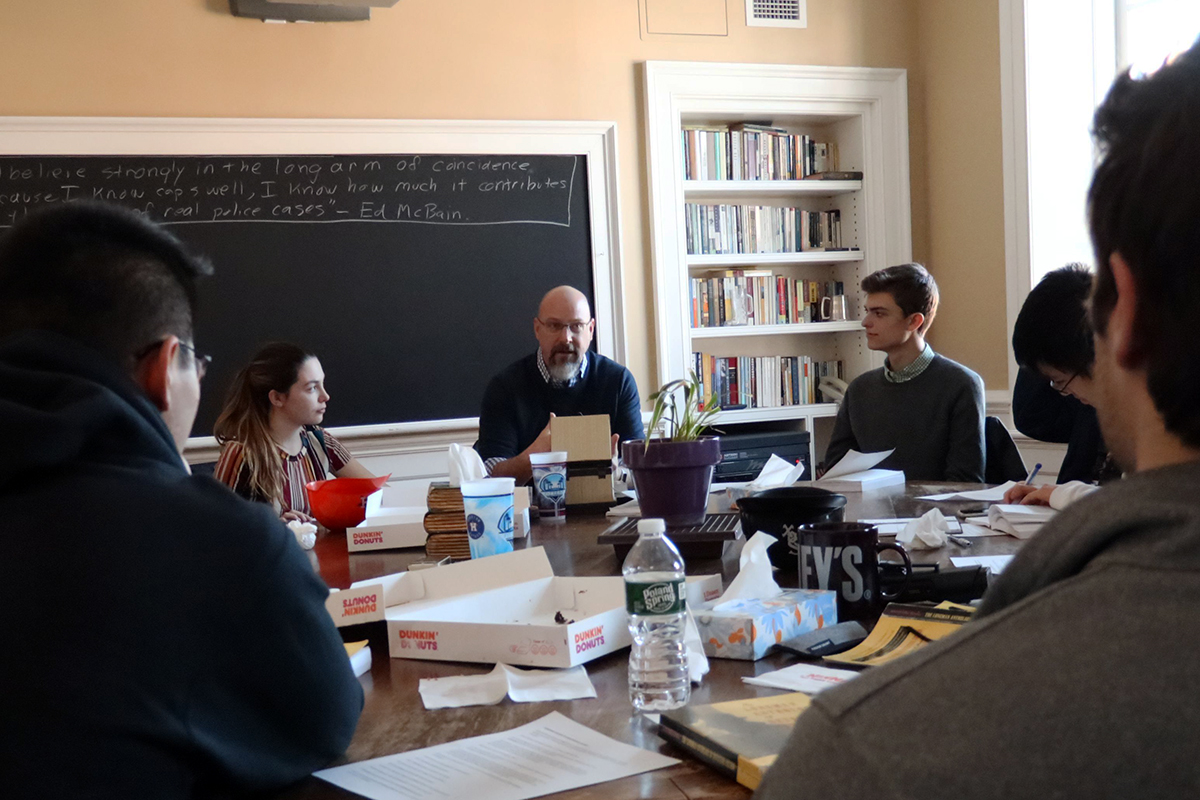
Sam Farnsworth ’20 probed Munck about what often serves as the climax to a great detective story — the interrogation.
“If you want to get into the crux of a large part of detective work, it’s doing an interview with somebody.” Munck says. “A lot of times suspects will be waiting for that phone call so there’s a lot of anxiety about what they’ve done and it’s actually a relief to hear from the police.”
Munck went on to describe his method for coaxing suspects to come clean. “Part of my job is to establish a relationship with that person and have a conversation with them.” he says. “Confessing to me is against your self-interest. Are you going to do that if you don’t have a relationship and a rapport with someone you’re talking to?”
Rounding out the class period, Griffith asks Munck how accurately McBain portrayed the police work in the story, a number Munck puts at “50-50.”
“Some of it was good.” Munck says. “But you definitely don’t go out to eat with a murder suspect.”
